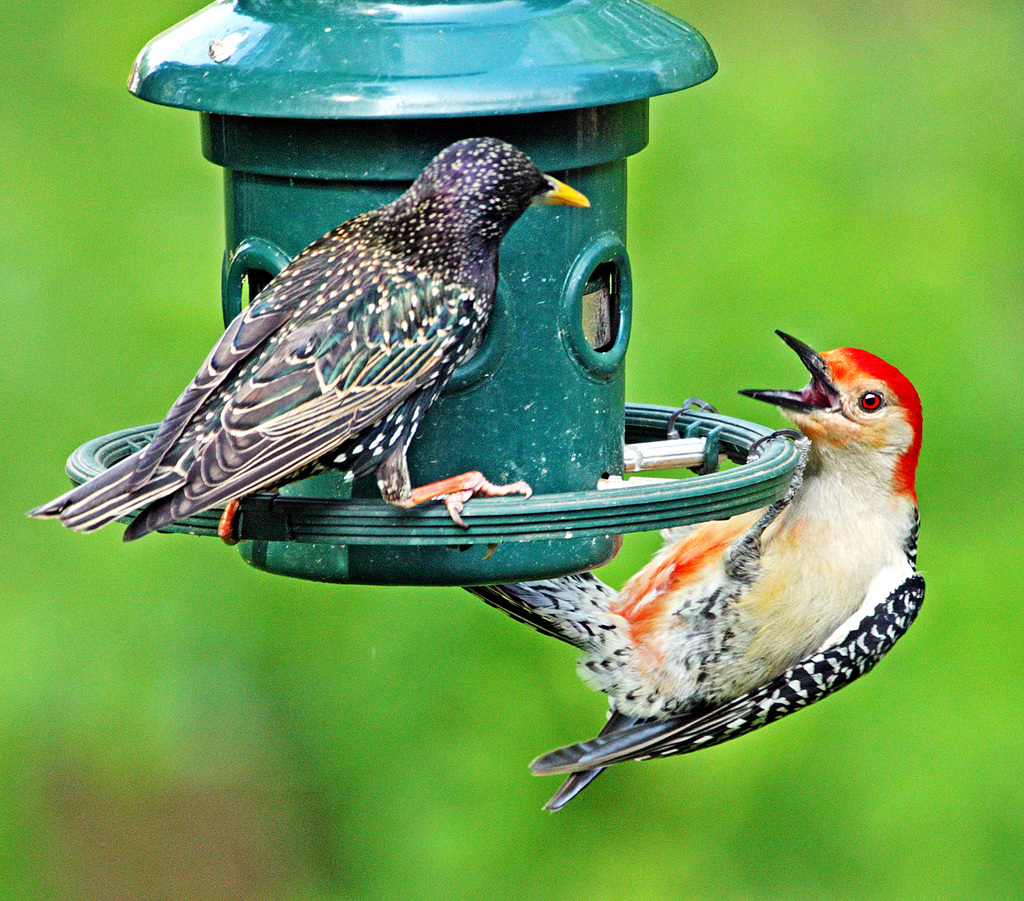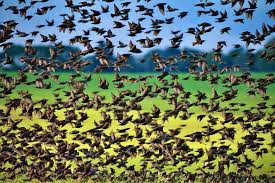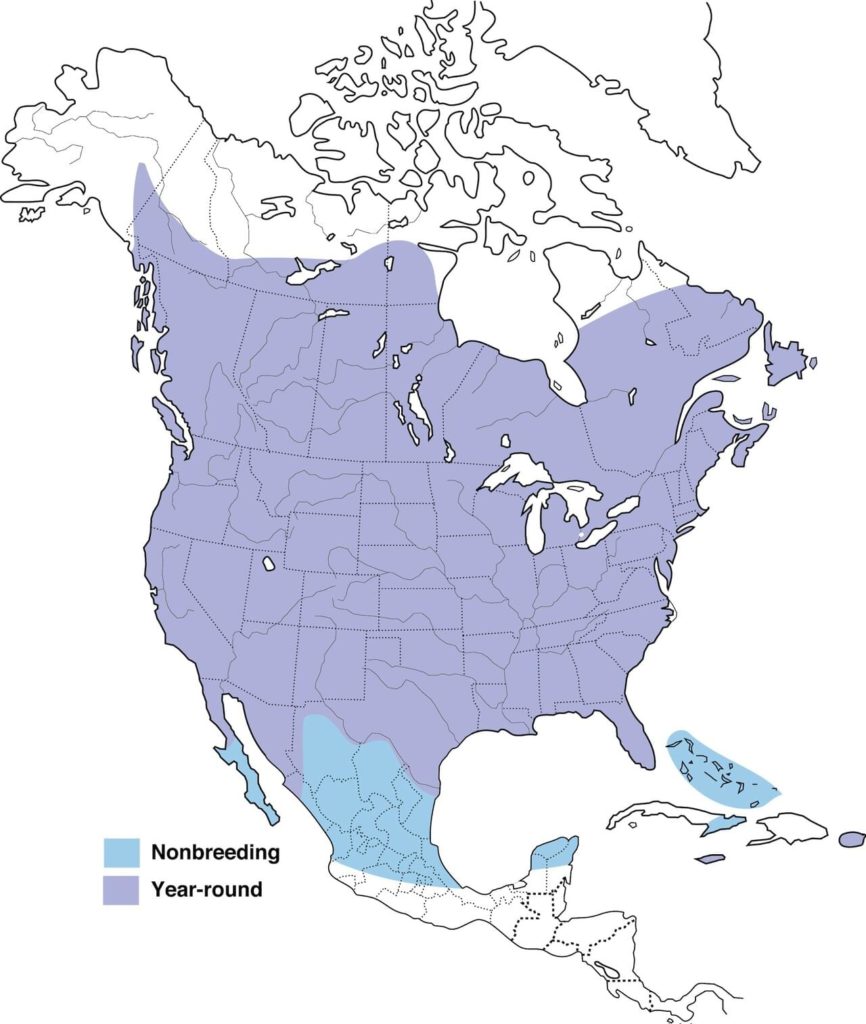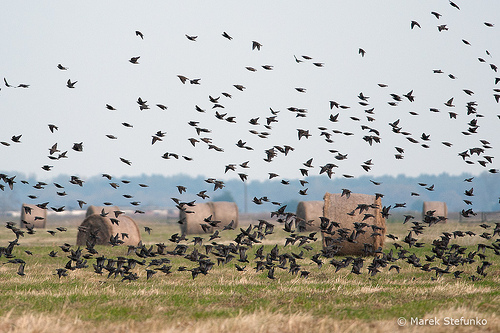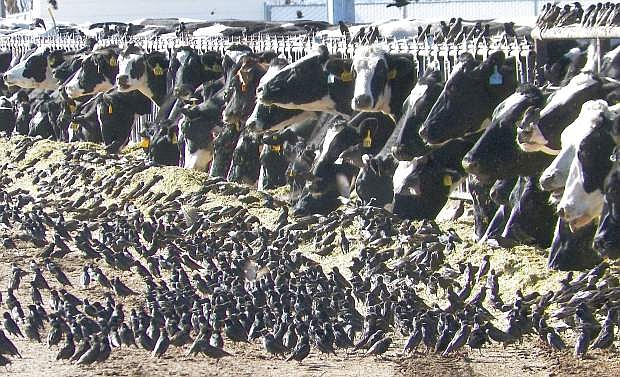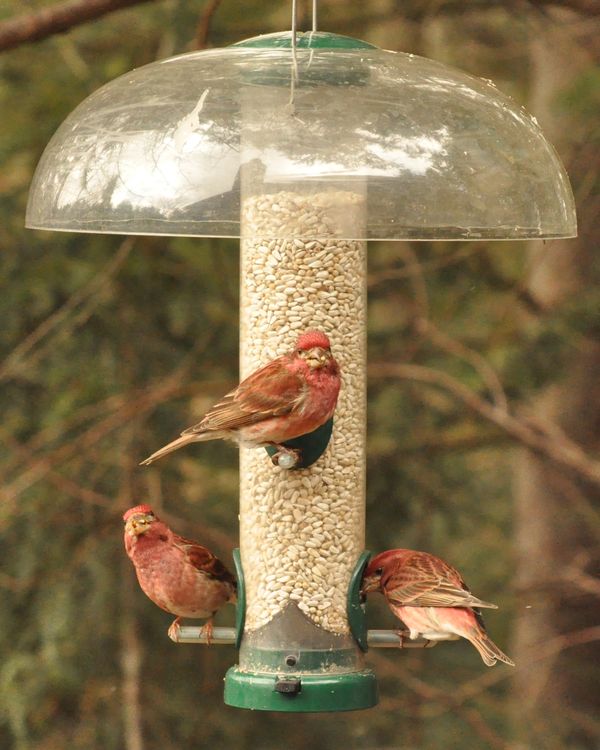by BA Nester
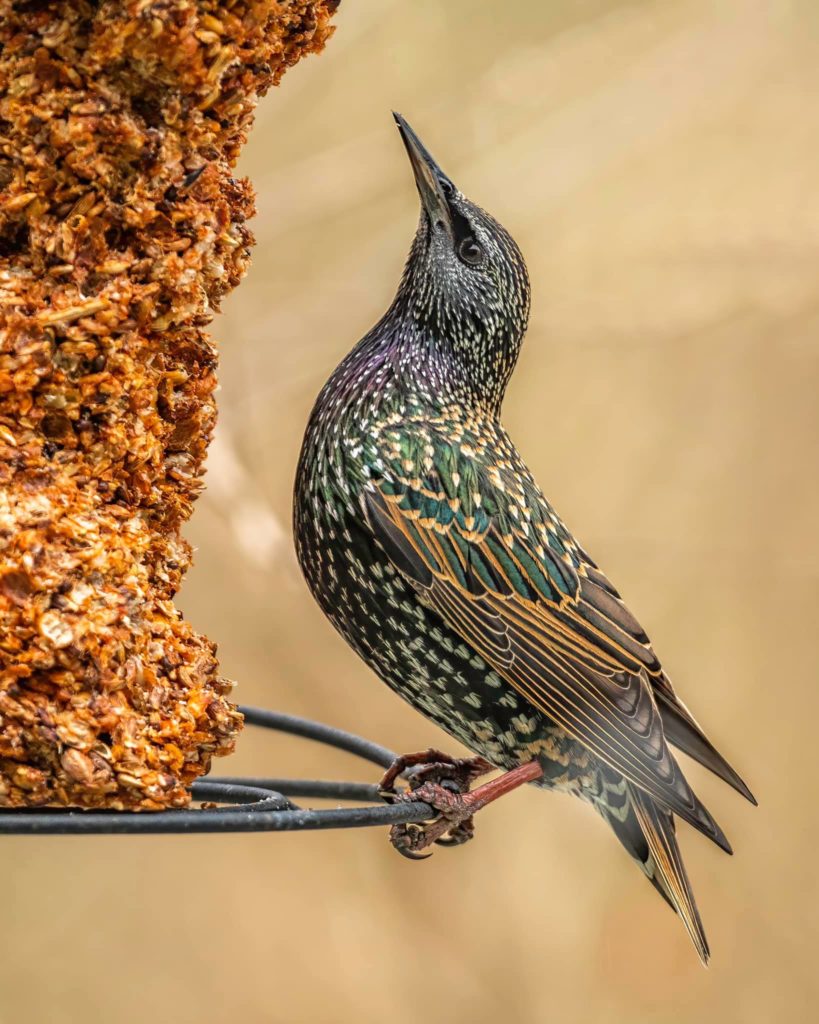
I just read this headline in Salon about the European Starling: Get the flock out of here: Starlings are the worst. Birds. Ever. With the subheading: Go on and hate starlings, who cause $900 million of damage a year, kill other species and destroy the ecosystem.
WOW!!! Those are emphatic headlines! BUT, that’s how most of us feel about the European Starling. They’re over-running the world! They’re LOUD, DIRTY, AGGRESSIVE and INVASIVE! According to Bird Strike Committee USA, birds cause $900 million in damage to the aviation industry yearly, and, with their deceptively high body density and habit of flying in such large flocks, STARLINGS — or “feathered bullets,” are among the top offenders. Not good news for the European Starling.
But let’s go back to the beginning … how did the European Starling get to North America? It’s the same old thing, some well-intentioned person, in this case a man named Eugene Schieffelin, who was among a group of literate folks who wanted every bird ever mentioned by the Bard himself, William Shakespeare, to be represented in North America! He took it upon himself to release 60 imported European Starlings in Central Park!!! They didn’t make it initially, so he repeated his releases until they did!!! And today the estimated number of that “dirty bird” is more than 220 million European Starlings residing year-round in most of North America! With few natural predators to keep their numbers in check, they’re free to wreak havoc. And that they do!
According to Salon, “It’s estimated that these stocky blackbird-look-alikes cause $800 million worth of damage to America’s agricultural industry and food stocks every year. They nest in farm equipment, creating fire hazards. They travel in large flocks 50,000 strong, pilfering vineyards for grapes and farms for fruit, vegetables, seeds and grain. They diminish supplies of livestock feed — 1,000 birds can put back 100 pounds of grain a day — or they contaminate them with their feces. And they transmit parasites and diseases, including E coli, from farm to farm.”
The destructiveness of the European Starling goes on and on: The acidic composition of their poop can cause structural damage to buildings that are thickly covered with Starling feces! In 2016, there was such a fierce deluge of Starling poop in Rome that people used umbrellas as they walked, and cars were skidding off the roads! And then there is their single most destructive action to the avian world in North America, they invade and kick our native birds out of their nesting cavities and nest boxes, throwing the eggs out and killing any young birds in the nests! Among the species they’ve chased off are Wood Ducks, Buffleheads, Northern Flickers, Great Crested Flycatchers, Tree Swallows, and Eastern Bluebirds. The Starlings thrive and our native species decline!

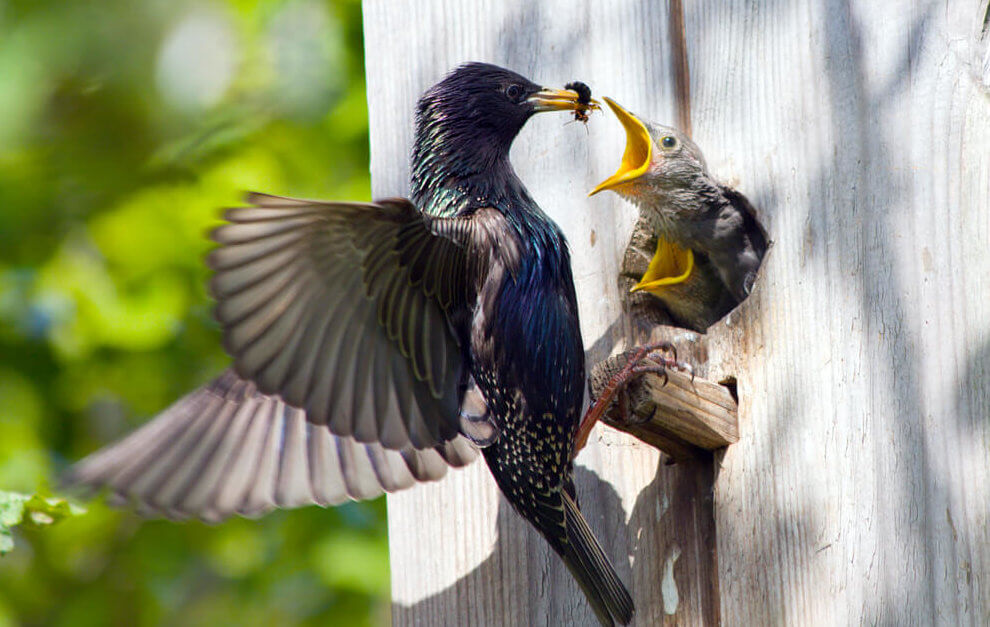
What to do? There have been so many attempts to thwart their growth and spread. Since the European Starling is an introduced species, they are not protected, so you can shoot them and EAT them! It’s said they taste like “mild liver”! Not surprising that idea never caught on! Sam Wood would disagree with that! People have tried poisoning them, but the downside of that is pollution of the soil and water, passing the poison on to people, animals, insects and protected songbirds! They’ve tried putting bird nets over feed lots where Starlings like to gather, but it was ineffective and difficult to manage.
At one point, in Washington, D.C., they tried exposing the Starlings to itching powder, but that didn’t work! Some have tried blasting recorded predator calls, but that only works until the intelligent Starlings figure it out! Today they are trying to employ various versions of drones to confuse the Starlings, but thus far, the Starlings eventually figure it out and disregard the fake birds.
Kevin McGowan, PhD, researcher with the Cornell Lab of Ornithology said, “Biology is not rocket science. . . . it’s much harder than that. This isn’t like a hurricane — it’s not one big thing you can see coming. It’s a little bit here and a little bit there, and there’s a thousand places for the sand to fall out of the bag. We don’t want to wage war and eliminate birds altogether, like they did in China, because that’s going to lead to a lot more problems. So, there’s no simple fix.” Well, that’s just depressing. Guess we should learn all we can about them and protect our native species as best we can until the scientists figure out what to do about the European Starling!
If the E. Starling has become a pest at your backyard bird feeder, change your feed from sunflower seeds and Nyjer thistle to safflower seeds … the safflower seeds are too hard for them to crack with their softish beaks and they simply don’t like the taste of safflower. We know they LOVE suet! Well, that’s an easy fix, too! Put out feeders that require the birds to hang upside-down from it … the Chickadees, Titmice and Woodpeckers will have NO problems with that! Monitor your nest boxes and if you see that the Starlings have replaced your native birds, clean out the Starling nest and hope that your natives will return!
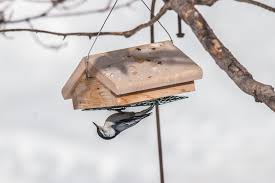
On the positive side, huge flocks of E. Starlings put on incredibly beautiful aerial shows called Murmurations! I have yet to see one in person … it’s on my bucket list! E. Starlings make good cage-bird pets! They are amazing mimics able to imitate not only other birds, but mechanical sounds and the human voice! Their non-breeding feathers are pretty with their iridescence and spots. Well, I guess every creature has it’s positive side! I’ll leave that up to you.
So, gather your binocs, a comfy portable chair, the Merlin App on your phone, and drive on out into the country. Scan the wires and farmyards for the ubiquitous European Starling! It won’t take long, because … THEY’RE EVERYWHERE!
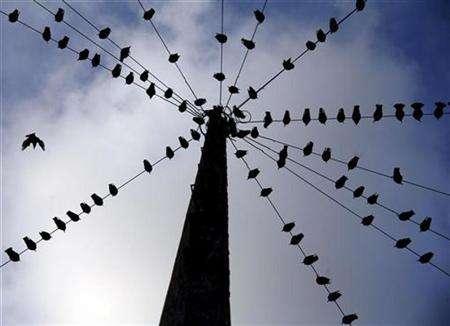
European Starling Facts:
- They prefer to live around people.
- They require open, grassy areas in which to forage, a water source, and trees or buildings that contain suitable cavities for nesting.
- Starlings will eat nearly anything but prefer insects and other invertebrates when they’re available: grasshoppers, beetles, flies, caterpillars, snails, earthworms, millipedes, and spiders. They also eat fruits including both wild and cultivated; as well as grains, seeds, nectar, livestock feed, and garbage.
- Males choose the nest site, almost always in a cavity, typically in a building or an old woodpecker hole, or a nest box. Nest holes are typically 10-25 feet off the ground but can be up to 60 feet high.
- Male starlings begin building the nest before mating, but the females oversee the final product.
- Nests can be built in as little as 1-3 days.
- Both sexes incubate the eggs.
- Clutch size: 3-6 eggs
- No. of Broods: 1-2
- Incubation: 12 days
- Nestling Period: 21-23 days
- Distribution: THEY’RE EVERYWHERE!
